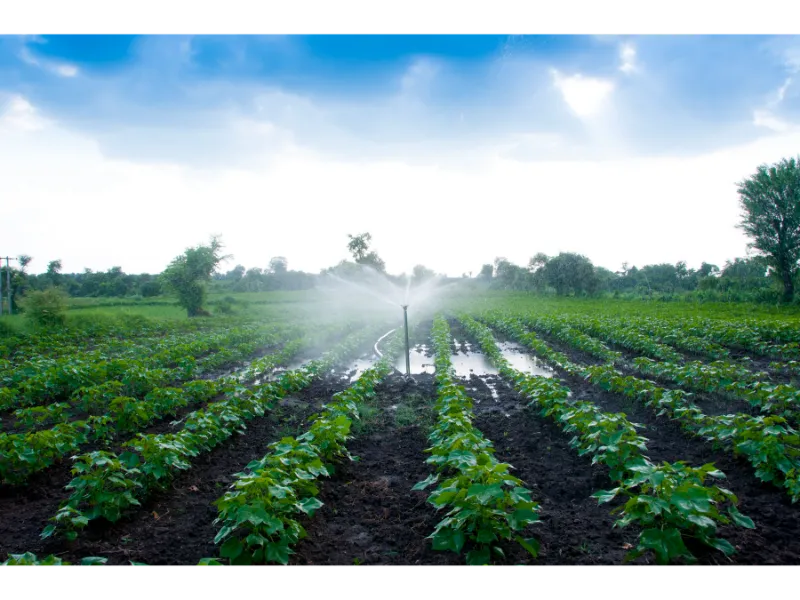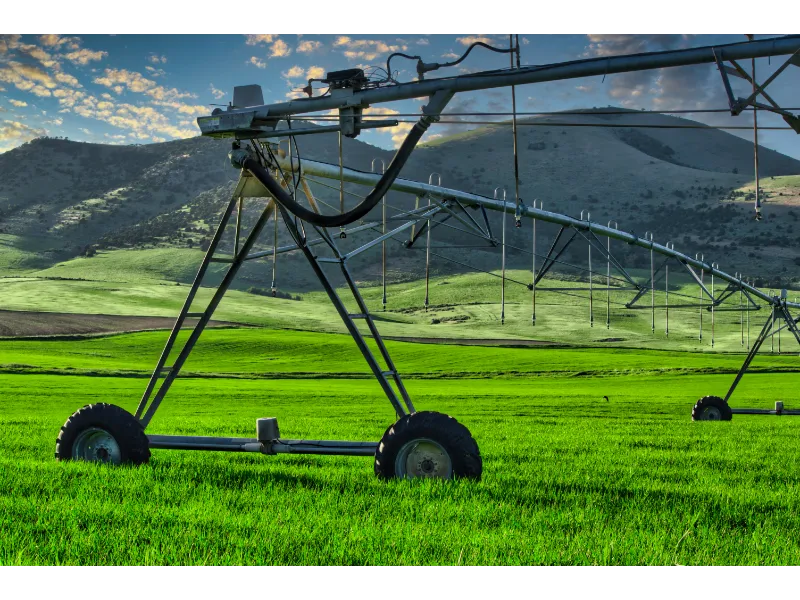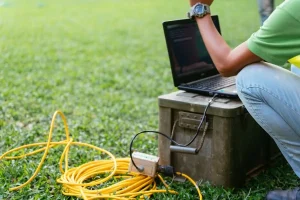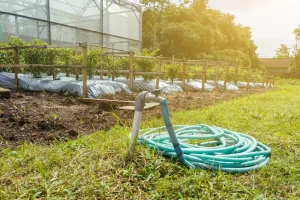What are smart irrigation systems? They are a set of technological solutions that optimize water usage in agriculture. Furthermore, these systems rely on sensors, software, and automation technologies. Therefore, irrigation processes are managed based on data. In this case, plants receive only the water they need. This way, both yield increases and resource waste decreases. Furthermore, soil moisture and weather sensors work together. Therefore, irrigation is performed at the right time. In this case, water and energy savings are achieved. This way, environmental sustainability is supported. Furthermore, the systems can be remotely controlled via mobile applications. This lets producers monitor constantly. It reduces manual intervention. It saves labor. Automatic valves start irrigation. This minimizes errors. The system runs efficiently. Thus, plant growth improves.
Table of Contents
- Differences Between Traditional Irrigation and Smart Irrigation
- Precision Irrigation Management with Soil Moisture Sensors
- How Weather-Based Irrigation Systems Work
- Technologies Used in Smart Irrigation Systems
- Installation and Maintenance Process of Smart Irrigation Systems
- Conclusion
- Frequently Asked Questions
Differences Between Traditional Irrigation and Smart Irrigation
Traditional irrigation methods are usually performed manually without timers. Furthermore, water usage may occur independently of actual needs. Consequently, water waste and energy loss may occur. In this case, efficiency decreases and costs increase. Thus, agricultural sustainability is negatively affected. Furthermore, decisions in traditional methods are based on observation. Therefore, the correct timing and amount cannot be determined. In this case, growth is uneven. Thus, product quality declines. Smart irrigation uses data. Therefore, soil moisture and weather conditions are taken into account. In this case, only the necessary areas are irrigated. In this way, water and energy savings are achieved. Furthermore, the systems can be controlled remotely. This minimizes human error. In this case, the farmer saves time and labor. This way, production progresses more systematically. Moreover, smart systems offer environmentally friendly solutions.

Precision Irrigation Management with Soil Moisture Sensors
Soil moisture sensors are used in agriculture to determine the correct time for irrigation. Additionally, these sensors instantly measure the soil’s water requirements. This prevents unnecessary irrigation practices. As a result, water waste and energy loss are reduced. This way, both costs are lowered and the environment is protected. Furthermore, sensor data is transferred to digital systems. Therefore, irrigation is data-driven. Plants get the water they need. This ensures balanced growth. In addition, irrigation adapts to soil structure. Thus, roots receive oxygen. Product quality and yield rise. This makes farming sustainable. Furthermore, sensors are monitored by mobile apps. Irrigation is managed remotely. Farmers save time and labor. Thus, production is more efficient. In addition, moisture is measured at different depths. Therefore, irrigation decisions become more precise.

How Weather-Based Irrigation Systems Work
Weather-based irrigation systems operate automatically based on environmental data. Additionally, these systems analyze temperature, humidity, wind, and precipitation information. Therefore, irrigation is only performed on the days and at the times when it is needed. In this case, water waste is largely prevented. In this way, sustainable and efficient irrigation management is ensured. Furthermore, the systems are integrated with meteorological data. Therefore, irrigation is postponed on days when rain is expected. In this case, natural water resources are utilized in the best possible way. This saves energy and labor. Furthermore, sensors enable real-time analysis. Therefore, irrigation decisions are data-based. In this case, growth stays balanced. Product quality and yield improve. In addition, systems are remotely controlled by mobile apps. Therefore, farmers monitor fields anytime. In this case, irrigation is planned flexibly.

Technologies Used in Smart Irrigation Systems
Smart irrigation systems are equipped with digital solutions that increase efficiency in modern agriculture. Furthermore, sensor, automation, and software technologies are used together in these systems. Therefore, the irrigation process is carried out in a data-driven and controlled manner. In this case, resource use becomes more planned. In this way, water and energy savings are achieved. Furthermore, soil moisture sensors provide real-time data. Therefore, irrigation needs are clearly determined. In this case, unnecessary water usage is prevented. This way, plants develop in a balanced manner. In addition, weather sensors work in conjunction with the system. Therefore, rainfall data is added to irrigation plans. In this case, natural water use improves. Furthermore, automatic valves work with timers. Thus, irrigation runs automatically. This lowers human error. In addition, mobile apps allow remote access. Therefore, farmers monitor in real time. This saves time and labor.

Installation and Maintenance Process of Smart Irrigation Systems
The installation of smart irrigation systems begins with planning and analysis. Additionally, soil structure and plant type are taken into consideration. Therefore, sensors and equipment must be selected correctly. In this case, the system operates efficiently and effectively. This ensures water and energy savings. Furthermore, the irrigation area is mapped to create the system design. Therefore, piping and valve placement are planned correctly. In this case, equal water distribution is ensured. This way, plant growth is balanced. In addition, a control unit is installed. Therefore, irrigation is automated. In this case, manual intervention decreases. This saves farmers time. Furthermore, mobile apps provide remote access. Irrigation is monitored anytime. Additionally, regular maintenance keeps efficiency. Therefore, sensor checks and filter cleaning matter. In this case, malfunctions are detected early.

Conclusion
As a result, new technologies are becoming increasingly important for achieving productivity and sustainability goals in agriculture. In addition, the efficient use of water resources is becoming more critical by the day. For this reason, producers are increasingly seeking answers to the question, “What are Smart Irrigation Systems?” In this context, sensor-supported and automated systems are coming to the fore. In this way, the water needs of plants are met at the right time. Furthermore, unnecessary irrigation practices are prevented and water waste is reduced. Consequently, both costs are reduced and environmental impacts are minimized. In this case, agriculture becomes more planned and controlled. Moreover, remote access enables constant monitoring. Consequently, farmers save time and labor. This way, quality and yield rise. Furthermore, the question “What are Smart Irrigation Systems?” guides future farming. Therefore, these systems are key to modern agriculture.
Frequently Asked Questions
What is a smart irrigation system? It is a technological irrigation system that operates based on data and provides automatic water management.
What is the difference between smart irrigation and traditional irrigation? Smart systems operate based on sensor data, while traditional systems are operated manually.
What do soil moisture sensors do? They measure the moisture level in the soil to determine irrigation needs.
How does a weather-based irrigation system work? Irrigation timing and duration are automatically adjusted based on meteorological data.
What technologies are used in smart irrigation systems? Soil and weather sensors, automatic valves, software, and mobile applications are used.
Can these systems be managed remotely? Yes, remote control is possible via a mobile application or computer.
How does the installation process work? A land analysis is performed, and sensors and control units are placed appropriately.
What should be considered during maintenance? Sensor calibration, filter cleaning, and software updates should be performed regularly.
Can smart irrigation systems be used on any terrain? Yes, they are adaptable to climate and terrain.
Do these systems save water? Yes, they save water because only the required amount is used.








